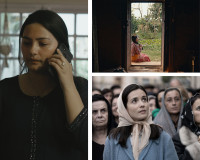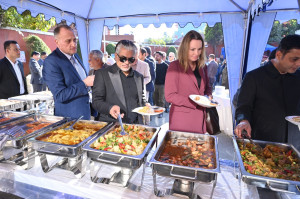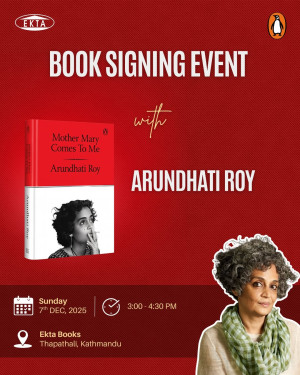Culture & Lifestyle
Searching for one’s existence—inside and outside Nepal
Filmmaker Kalani Gacon talks about his passion for filmmaking and his experience working in the country.
Ankit Khadgi
The story of how Kalani Gacon came to Nepal is an interesting one—it was an accident, he says. When he was travelling in Gorakhpur, India in 2015, he decided to take a bus to Kathmandu in a spur of a moment. Now, fast forward to four years, he has not only become a resident but has made a film about people like him, who have decided to call Nepal their home.
The film, Journey to the Center of the Heart by the Australia-born 24 -year-old, won the second prize in the international category of recently held 19th Kathmandu Mountain Film Festival. Gacon has also been part of a few Nepali films like Black, Lily Bily, and Intu Mintu London Ma.
The Post talked to Gacon about his love for filmmaking, his inspiration and his future projects. Excerpts:
How was your experience of making Journey to the Center of the Heart?
I was very keen on making a movie about foreigners living in Nepal. It was also something very personal to me. It took me three years to complete the movie. When I conceived the idea, I didn’t have sufficient financial resources. With the savings I had, I rented a camera and used it to shoot my movie. There were even moments when I felt I was about to pass out while filming, but the sheer passion and desperation to tell this story kept me motivated.
What was the main inspiration behind choosing this particular issue for your film?
Back then, I was in love with a Nepali woman. We were imagining our future together. But she didn’t want to settle in Nepal. In her mind, the only way to live happily was to leave Nepal and settle in another country. For me, it was deeply tragic.
Similarly, I started making friends here in Nepal. But, one by one, they left Nepal and settled in Australia, Canada and other foreign countries. I was also friends with foreigners who found happiness here in Nepal.
So, these two distinct inflows and outflows of people who were searching for their existence, a pursuit of either material or spiritual wealth made me realise that their stories are deeply powerful. These stories also reflect the current state of the modern world.
How difficult was it portray people’s personal lives on the big screen?
I take the time to understand my subject and characters, and I’m mindful that this will take time. For my documentary, I spent a lot of time understanding and researching about my characters. I met more than 200 immigrants who have decided to settle in Nepal. After I selected the final characters for the movie, I spent as much time I could with them. It was almost like I was living with them.
What inspired you to choose filmmaking as your medium of expression?
I was seven years old when I fell in love with the process of filmmaking. My grandfather used to take me around our village, where we used to film our neighbours doing their daily chores. Then, we would go back, and after watching it, we would make small edits to it. That’s how I was introduced to the process of filmmaking.
I feel filmmaking makes me alive and that I am meant to do it. Filmmaking combines the element of time, with sound and visuals. It is like going through a spiritual journey. It has an immersive power that allows me to have a deeply emotional experience.
How was your experience different from working in the Nepali film industry in comparison to other countries?
I have worked on multiple Nepali projects—from commercial to independent movies. The striking difference is the attitude towards time. In the west, each and every second is valuable in a movie, as it is attached to the finances. Whereas, in a Nepali movie set, the attitude towards time is slightly compromised. But the wholesome experiences gained in Nepali movie set makes up for the delayed schedules.
In the west, there is so much stress to complete everything on time and arrange it systematically, which makes the whole creative process so strenuous that sometimes you lose the magic of making a movie. That’s why I would prefer working in Nepali set any day, even if they are three hours late, because I know I will have a good time.
Any future projects you are working on?
The stories of Nepali immigrants are really powerful and engaging. In my film, I was unable to provide equal space to their stories, which was juxtaposed against the stories of foreigners immigrating to Nepal. But I feel both the stories require individual screen space and detailing.
That’s why I am working on another documentary about seven Nepali immigrants who are living in different parts of the world. I want to portray their struggles and experiences. Apart from that, I am also working on a documentary about falling birth rates in Japan.




 20.12°C Kathmandu
20.12°C Kathmandu















